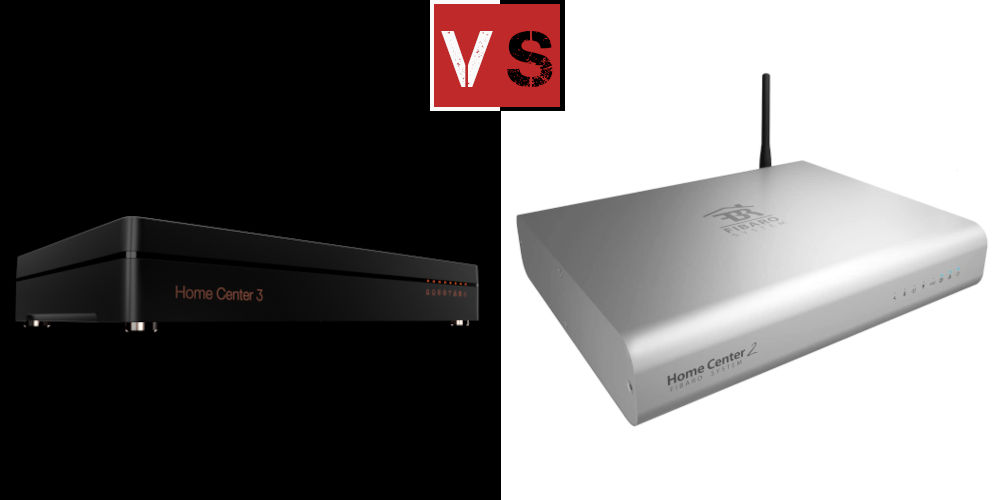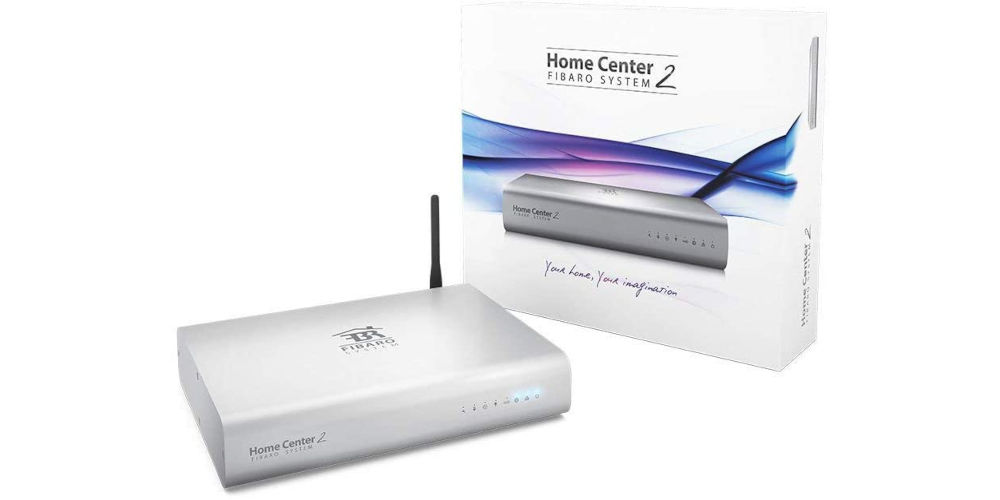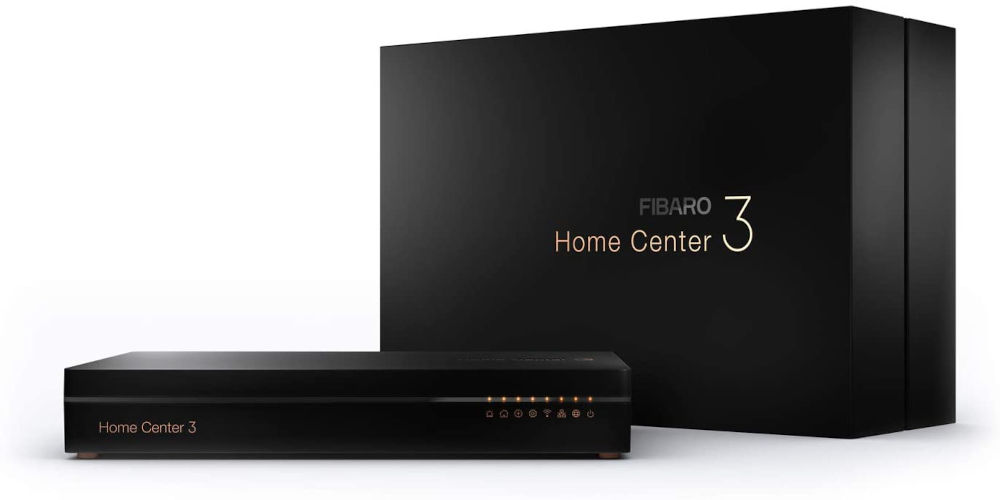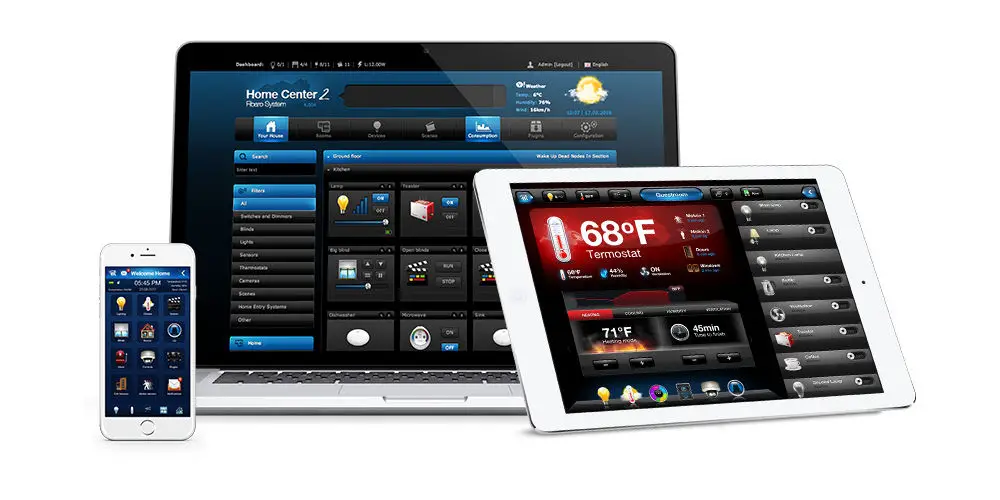Fibaro Home Center 2 vs 3 comparison

After settling on a Fibaro home automation system, your next choice is which hub to use, and with four options to choose from, it’s not easy. After reducing the option to two, it’s worth comparing Fibaro Home Center 2 vs 3.
Each offers a distinct set of specifications, appealing to different homeowners. Some of the differences may be subtle. However, buying the wrong Fibaro Home Center version could impact the system you build.
So, if you can’t decide between Fibaro Home Center 2 vs 3, we’ll help you make the right choice to meet your home automation goals.
Why aren’t the Home Center Lite or Home Center 3 Lite suitable?
While the Fibaro Home Center Lite is a superb unit, it’s quite limited, making it ideal if you want to control one or two functions. However, due to its limits, building a complete smart home system is tricky.
So it’s worth saving up for either Home Centers (HC) 2 or 3. You could look on eBay for a second-hand HC 2 or HC 3. Another option is the Home Center 3 Lite, but again, it’s quite limited.
Fibaro Home Center 2

photo by Fibaro
Sporting a sleek cast alloy case, the Fibaro Home Centre 2 uses a Dual-core Intel Atom (1.6GHz) processor with 1 GB of RAM and 2 GB of storage. Two backup methods are available: Fibaro cloud and a local USB drive.
It can manage up to 232 Z-Wave devices, including the Fibaro product range. Control the system using an App, online portal and voice commands (Google Assistant and Amazon Alexa). You can even program scenes in three different ways.
The HC2 doesn’t have built-in Wi-Fi. So, must be hardwired into your router to work or synced with IFTTT. The HC2 has a 10/100/1000 Base-T (Gigabit) Ethernet port and 4 USB sockets.
Fibaro Home Center 3

photo by Fibaro
Built around a Quad-core Arm Cortex A53 (1.2GHz) with 2 GB of RAM and 8 GB of storage, the Fibaro Home Center 3 is a Z-Wave 500 series device that can control up to 232 devices. The unit is slightly smaller than Home Center 2 and has a soft-touch plastic shell.
It has built-in Wi-Fi and connects to a router without an Ethernet cable. Of course, it also has a 10/100 Base-T Ethernet socket for hardwiring into a router. It also works with Bluetooth Low Energy (BLE) and ZigBee.
Much like the HC 2, you can use an App, online portal, and voice control to operate the system. Plus, you can build scenes using drag-and-drop blocks or LUA script. The HC3 saves backups to the Fibaro cloud and local internal drive, ensuring your system continues to work.
Comparison Chart
| Features | Home Center 2 | Home Center 3 |
| Scene Control | ||
| Graphical Block Scene Editor | Yes | Yes |
| Magic Scenes | Yes | Yes |
| LUA Scenes | Yes | Yes |
| Virtual Devices | ||
| Virtual Devices – IP Strings | Yes | Yes |
| Virtual Devices – LUA-based | Yes | Yes |
| General Software | ||
| Remote Access | Yes | Yes |
| Web UI | Yes | Yes |
| iOS App | Yes | Yes |
| Android App | Yes | Yes |
| Fibaro App Widgets | Yes | Yes |
| Android Wear Support | Yes | Yes |
| Alexa Voice Assistant | Yes | Yes |
| Google Assistant | Yes | Yes |
| Siri (via iOS App Shortcuts) | Yes | Yes |
| VOIP – Voice Over IP | Yes | Yes |
| Master Gateway | Yes | Yes |
| Geolocation | Yes | Yes |
| Number of Plug-Ins | Not limited | Not limited |
| Recovery / Backup | Fibaro Cloud, Local USB Drive | Fibaro Cloud, Local Internal |
| Home Automation Support | ||
| Z-Wave (868.4MHz) | Yes | Yes |
| Z-Wave Plus (868.4MHz) | Yes | Yes |
| Z-Wave Protected Mode | Yes | Yes |
| Recommended No. of Z-Wave Devices | up to 232 | up to 232 |
| ZigBee | No | Ready |
| Bluetooth Low Energy (BLE) | No | Ready |
| 433MHz (OOK, FSK, GFSK) | No | Ready |
| 868MHz (OOK, FSK, GFSK) | No | Ready |
| IP Camera Support | Yes | Yes |
| Satel Alarm Integration | Yes | Yes |
| Hardware Features | ||
| Processor (CPU) | Dual-core Intel Atom (1.6GHz) | Quad-core Arm Cortex A53 (1.2GHz) |
| Memory (RAM) | 1GB | 2GB |
| Storage (Flash) | 2GB (+ 4GB Recovery Disc) | 8GB |
| Ethernet | 10/100/1000 Base-T (Gigabit) | 10/100 Base-T |
| WiFi | 802.11 b/g/n/a/ac 2.4GHz / 5GHz | |
| ZigBee | No | Yes |
| Bluetooth Low Energy (BLE) | No | Yes |
| 433MHz | No | Yes |
| 868MHz | No | Yes |
| USB Ports | 4 | 1 |
| Z-Wave Series | 300 | 500 |
| Case | Cast Alloy | Soft-Touch Plastic |
| Dimensions ((LxWxH) | 225 x 185 x 42mm | 220 x 140 x 35mm |
Table source: Vesternet
Decoding the technical specifications
You might wonder what the table shows and, more importantly, why it matters! We’ll explain these features in detail, as it will help you compare the Fibaro Home Center 2 vs 3.
Scenes
Imagine, you always get home at 5:30 pm. So, you want your Fibaro system to warm your home, turn on the hallway light and put the kettle on. To get your system to complete these tasks, you need to set up a Scene.
Fibaro Home Center Controllers offer three ways to create Scenes: Block Scenes, Magic Scenes and LUA Scenes.
Block Scene
Create sophisticated scenes using multiple triggers and many actions with customisable blocks.
Magic Scenes
As the simplest way to action tasks, Magic Scenes are restricted to only one trigger and one action.
LUA Scenes
As the most advanced scenes available, LUA Scenes use the LUA programming (scripting) language. You will need some basic programming skills, but it allows you to do almost anything! LUA Scenes are the next level up from the Block Editor.
Download other user’s Scenes
All Fibaro users can upload their Scenes to the Fibaro Marketplace, which can easily be downloaded, allowing you to save time and experiment with your system.
Fibaro Quick Apps/Virtual Devices
These devices in the Fibaro Home Center Controller are not physical. You can use Fibaro Quick Apps (HC3) or Virtual Devices (HC2) for controlling products using other networks. For example, controlling your AV equipment using your Wi-Fi / Ethernet network (IP Strings). Also, they can control several scenes at once.
Again, the Fibaro Marketplace is a superb way to start, as you can experiment with other users’ Quick Apps or Virtual Devices.
Scene and device control/complex logic (LUA)
As explained above, LUA is a powerful programming language that can handle complex tasks and can be incorporated into Quick Apps or Virtual Devices. These allow you to control scenes or other devices using your Fibaro Home Center.
Remote control of other brand’s products (IP Strings)
Fibaro Quick Apps and Virtual Devices can also control products using your existing IP network (Wi-Fi or Ethernet) as they use IP and HTTP requests.
Software features
Remote and mobile access
Use your smartphone, tablet or computer to control your smart home, no matter whether you are! Use the Fibaro Widgets to create shortcut buttons on Android and iOS devices, allowing you quick access to often-used scenes. You can even control scenes using Android Wear to sync the system to your Android smartwatch.
Voice Assistants
If you’re already using Voice Control, you’ll enjoy controlling your Fibaro system using Amazon Alexa or Google Assistant.
Siri voice control is also supported by using Siri Shortcuts to control devices or scenes. Hopefully, Fibaro and Apple work more closer in the future, allowing for a better integration.
VOIP (Voice Over IP)
Both hubs support VOIP, enabling you to talk over an IP network (Internet or home network). Use this feature to create an intercom system or access control (door or gate).
Master Gateway
If you need more than 232 devices to create your home automation system, then you can use multiple Home Centers. It’s even possible to locate hubs in different parts of your home. One hub becomes the master, with the others acting as slaves, allowing you to maximise your network.
Geolocation
Using the location-based service on your smartphone, the Geolocation feature can trigger scenes to run when you’re close to your home. For example, when you’re 3 miles from home, the system knows to switch on the outside light.
Plugins
A vast array of Plugins are available from Fibaro and third-party developers, including Philips Hue, Sonos, IFTTT and Yamaha. Plugins allow you to do more advanced things without learning how to code.
While there is no limit on the Fibaro Home Center 2 and Fibaro Home Center 3, running too many can hurt the system’s performance.
Recovery and back-up
Issues happen, so all Fibaro hubs regularly create back-ups of previously saved versions of software and configurations that are easy to restore.
The Fibaro Home Center 2 and Fibaro Home Center 3 Controllers store back-ups locally, using internal storage on the Home Center 3 and an external USB drive on the Home Center 2.
Home automation support
Z-Wave
You can use Z-Wave and Z-Wave Plus devices with all Fibaro Home Center Hubs. There are two versions of Z-Wave chips, so it’s worth exploring these in detail as there can be some limitations.
Series 300
Both the Lite and Home Center 2 run a Z-Wave 300 series chip. Technically, they are not Z-Wave Plus devices. However, they do support Z-Wave Plus Command Classes. That said, you might have compatibility issues or limited use of some features.
The Fibaro Home Center 2 Controller also has software support for Z-Wave Protected mode, which uses AES-128 encryption to secure your system.
Series 500
The Fibaro Home Center 3 hub uses a Z-Wave Series 500 chip, making it a full Z-Wave Plus device. So it offers all of the improvements of the updated protocol.
These include increased range (up to 150m), greater battery life, higher bandwidth communications, standardised methods for Over-The-Air (OTA) firmware upgrades and improved self-healing, fault tolerance and diagnostics on the Z-Wave network.
Series 700
For the latest Z-Wave version, you’ll want to buy a Home Center 3 Lite as it uses a series 700 chip, which is an improvement on the 500 series.
Hardware
The Fibaro Home Center 3 Controller is packed full of hardware, including ZigBee, Bluetooth Low Energy (BLE), 433MHz and 868MHz radios. These are all superb smart home controllers!
IP CCTV cameras
Both the Home Center 2 and 3 hubs support IP CCTV cameras via the Ethernet network. Plus, there are hundreds Fibaro compatible cameras, allowing you to painlessly improve and customise your home’s security system to your requirements.
Satel Alarm Integration
Both the Fibaro Home Center 2 and Fibaro Home Center 3 offer support for Satel alarm systems. You can easily connect and integrate them into the system. Plus, the Home Center 3 has a built-in alarm feature.

photo by Fibaro
Comparing Fibaro Home Center 2 vs 3
There’s much to consider when choosing between the Fibaro Home Center 2 vs 3. It comes down to your requirements. Our pick is the Fibaro Home Center 3 for several reasons.
It uses the latest Z-Wave 500 series chip and has a ton of onboard hardware, including Wi-Fi, 2GB of RAM and Cloud backups. The price of Home Center 3 is only slightly more expensive than Home Center 2. So, investing in the HC 3 is worth it and won’t blow your budget.
Regardless of which of the 4 Home Center hubs you buy, Fibaro is always developing interesting devices and software. Plus, they have an active support forum and user base.




